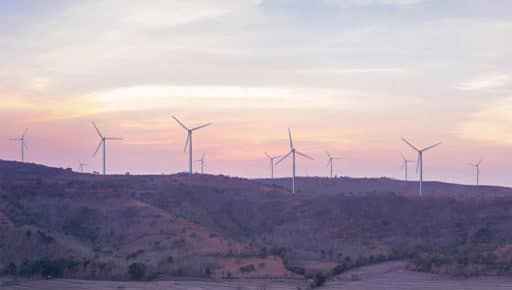Indonesia’s largest wind farm, scheduled to begin operating with Omexom in December 2017 in Sidrap, illustrates the renewable energy paradox in the Indonesian archipelago.

© UPC Renewables Indonesia
In December 2017, 30 wind turbines will begin generating carbon-free electricity on the ridges above Sidrap, an Indonesian city in the southern part of Sulawesi Island. The 78 MW site will be the largest wind farm in a country that is both complex and full of renewable energy potential.
UPC Renewables, the American developer in charge of the project, called on Omexom Renewable Energies Indonesia (VINCI Energies) to design and build the electrical network connecting the site to the national transmission grid, PLN.
“Sidrap reflects the various aspects of renewable energy in Indonesia,” says Omexom project manager Marc Fischer. The Sidrap site is located on a series of coastal ridges that receive large amounts of wind during the dry season and precipitation in the rainy season, enabling it to supplement and even complement the hydroelectric plants in the centre of the island.
A broad range of energy sources
Sidrap is in that sense representative of the country, which has a broad range of potential energy sources: in addition to wind and hydro, it can produce biogas from agricultural waste, solar energy, and geothermal energy to take advantage of the fact that the islands sit on a string of volcanoes.
Sidrap is in that sense representative of the country, which has a broad range of potential energy sources: in addition to wind and hydro, it has biogas, solar, and geothermal potential.
“Simply by exploiting all its accessible geothermal resources and investing massively in the construction of hydroelectric plants, Indonesia could achieve its COP21 objective of increasing the share of renewables in its energy mix to 23 per cent by 2025,” says Marc Fischer.
But the broad range of energy sources is not the only focus. As part of its commitment to the transition to renewables, Indonesia is also determined to control its costs. A law enacted in January 2017 caps the Feed-in Tariff applying to the state-owned power utility’s purchases of electricity from power producers at 85% of each region’s cost of production or at 100% if the cost is below the national average.
This method of calculating the FIT forces renewable energy producers to align with the cost of generating electricity from fossil fuels, in a country with plentiful coal reserves, that is the world’s fifth-largest coal producer.
Projects put on hold
This law has put a number of projects on hold for the time being (the Sidrap project is an exception, since its Feed-in Tariff had been set with the power utility prior to the enactment of the January 2017 law). Several hundred megawatts of solar and wind capacity are currently in abeyance, says Marc Fischer of Omexom Renewable Energies Indonesia. But the situation can change. “If all the parties involved in a project – developer, public authorities and builder – work together to optimise the financials, it is possible for the project to break even,” he says.
Marc Fischer is reasonably optimistic. He notes that the price of coal and oil may rise and that the cost of solar and wind generation – to mention only those renewables – is steadily coming down. Renewable energy is complicated in Indonesia, but it has a bright future!
17/10/2017


